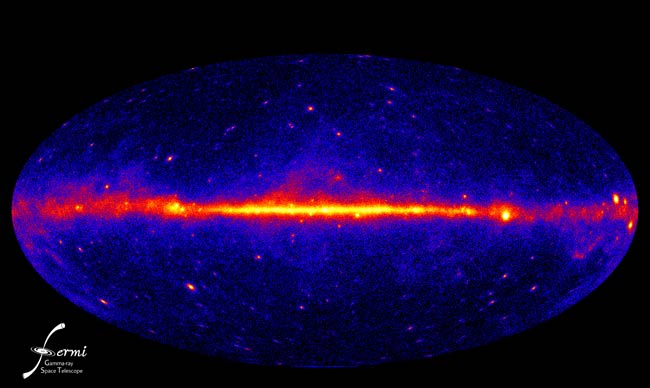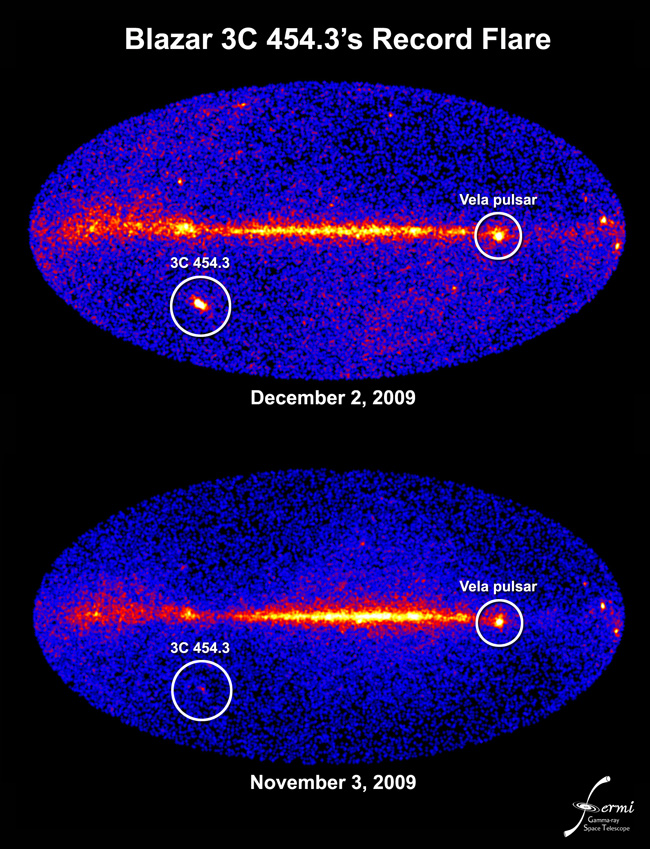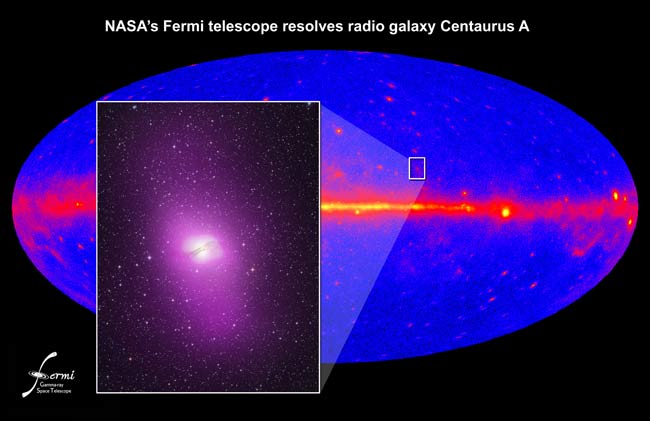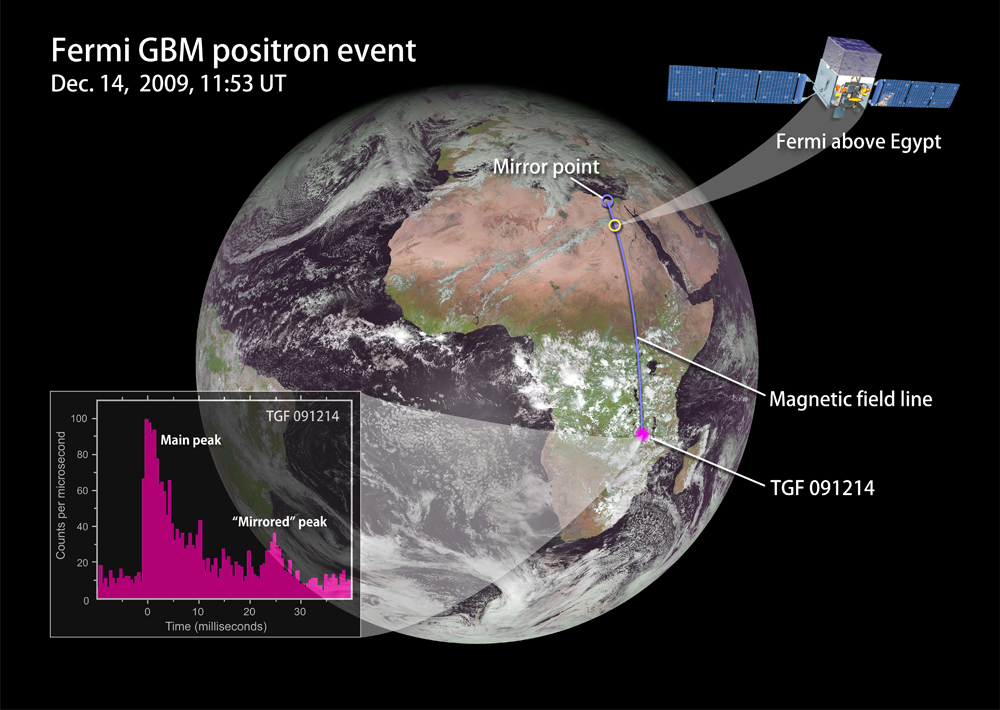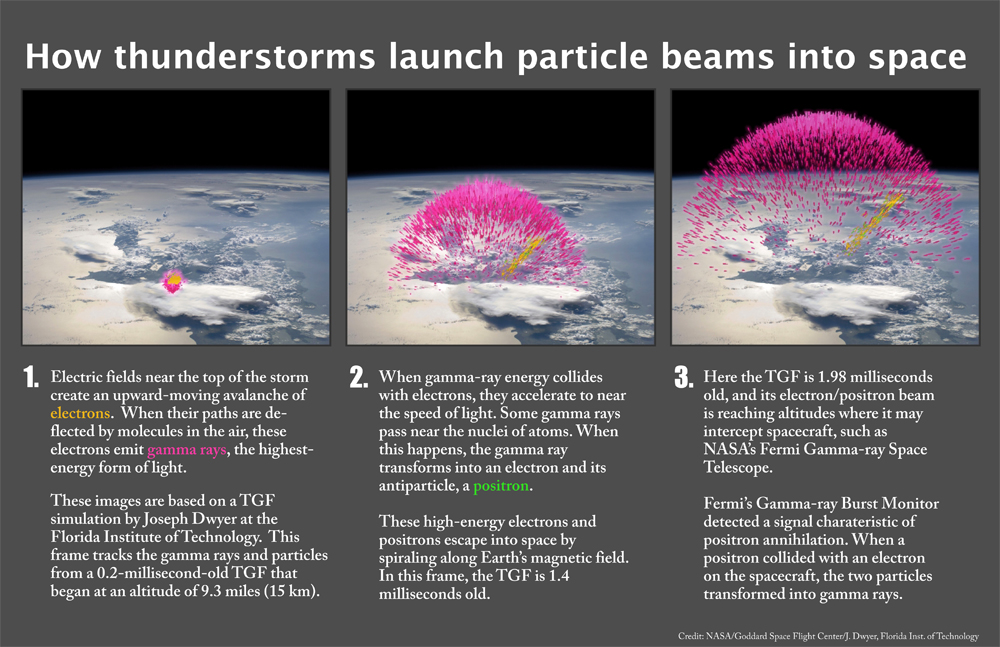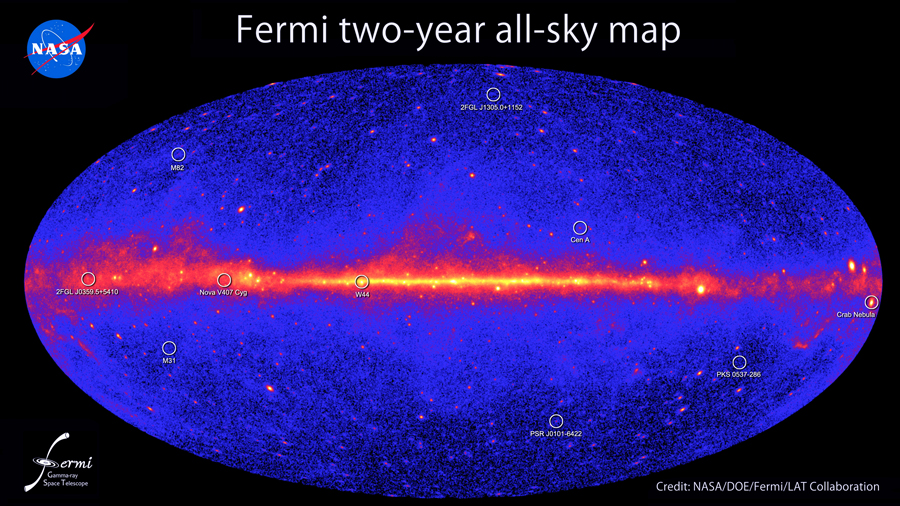Gamma-Ray Universe: Photos by NASA's Fermi Space Telescope
Space-Time Observations Find Einstein Still Rules
This view of the gamma-ray sky constructed from one year of Fermi LAT observations is the best view of the extreme universe to date. The map shows the rate at which the LAT detects gamma rays with energies above 300 million electron volts -- about 120 million times the energy of visible light -- from different sky directions. Brighter colors equal higher rates.
Brightest Gamma-Ray Flare in Universe Spotted
Unprecedented flares from the blazar 3C 454.3 in the constellation Pegasus now make it the brightest persistent gamma-ray source in the sky as of Dec. 2009. These all-sky images, which show the numbers of high-energy gamma-rays captured by Fermi's Large Area Telescope on Dec. 3 and Nov. 18, clearly show the change.
Giant Radio Galaxy Supercharges Big Bang Leftovers
Fermi's Large Area Telescope resolved high-energy gamma-rays from an extended region around the active galaxy Centaurus A. The emission corresponds to million-light-year-wide radio-emitting gas thrown out by the galaxy's supersized black hole. This inset shows an optical/gamma-ray composite of the galaxy and its location on the Fermi one-year sky map.
Antimatter Particle Beam from Thunderstorm
This NASA graphic depicts the antimatter particle beam signal observed by NASA's Fermi Gamma-ray space observatory on Dec.14, 2009 from a terrestrial gamma-ray flash over Egypt.
How Thunderstorms Make Antimatter Particle Beams
This NASA illustration shows how thunderstorms launch particle beams into space.
Fermi's All-Sky Gamma-Ray Map
This all-sky image, constructed from two years of observations by NASA's Fermi Gamma-ray Space Telescope, shows how the sky appears in gamma-ray light. Brighter colors indicate brighter gamma-ray sources. A diffuse glow fills the sky and is brightest along the plane of our galaxy (middle). Discrete gamma-ray sources include pulsars and supernova remnants within our galaxy as well as distant galaxies powered by supermassive black holes.
Fermi Gamma-Ray Pie Chart
Active galaxies called blazars constitute the single largest source class in the second Fermi LAT catalog, but nearly a third of the sources are unassociated with objects at any other wavelength. Their natures are unknown.
Breaking space news, the latest updates on rocket launches, skywatching events and more!
Tycho Supernova Shines Bright in Gamma-Ray Light
Gamma rays detected by NASA's Fermi space telescope show that the remnant of Tycho's supernova shines in the highest-energy form of light. This portrait of the shattered star includes gamma rays (magenta), X-rays (yellow, green, and blue), infrared (red) and optical data.

Space.com is the premier source of space exploration, innovation and astronomy news, chronicling (and celebrating) humanity's ongoing expansion across the final frontier. Originally founded in 1999, Space.com is, and always has been, the passion of writers and editors who are space fans and also trained journalists. Our current news team consists of Editor-in-Chief Tariq Malik; Editor Hanneke Weitering, Senior Space Writer Mike Wall; Senior Writer Meghan Bartels; Senior Writer Chelsea Gohd, Senior Writer Tereza Pultarova and Staff Writer Alexander Cox, focusing on e-commerce. Senior Producer Steve Spaleta oversees our space videos, with Diana Whitcroft as our Social Media Editor.
